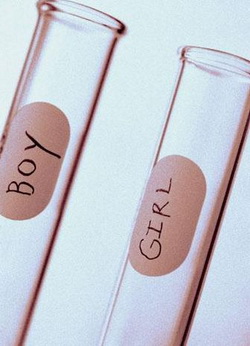Many struggling couples who fail to conceive after many years of trying opt to undergo in vitro fertilization (IVF). It is a process in which an egg and sperm are combined outside of the woman and transferred to the womb after fertilization. One factor to consider in looking for clinics is the IVF success rate.

Each clinic has varying IVF success rates. Some are high on multiple pregnancies while some have low pregnancy rates. These show how effective their programs are. There are several factors that affect a programs' IVF success rate. They are as follows:
- Quality and skills of the embryologist
- Experience and skills of the fertility specialist
- Average number of embryos transferred in each case
- Types of cases taken by clinics
According to the SART Clinic Summary Report for the year 2009, there are over 142,241 cases that chose assisted reproductive technology and over 99% of them used IVF treatment. IVF success rate number one factor is the women's age. As women get older, chances of a successful IVF treatment gets lower. The summary of results is as follows:
Using Fresh Embryos from Non-Donor Oocytes
For women younger than 35:
There are over 39,465 cycles for that year and 41.4% of those cycles resulted into live births. 32.9% of those successful live births are twins while 1.6% of those are triplets or more.
For women ages 35 to 37:
There are over 20,545 cycles and 31.7% of those cycles resulted to live births. 27.4% of those successful live births were twins while 1.5% was triplets or more.
For women ages 38 to 40:
There are over 20,911 cycles and 22.3% of those cycles resulted into live births. 20.9% of those successful live births were twins while 1.7% was triplets or more.
For women ages 41 to 42:
There are over 9,389 cycles and 12.6% of those cycles resulted to live births. 15.8% of those successful live births resulted to twins while 0.5% was triplets or more.
For women ages 43 up:
At the age of 43 and up, chances of getting a successful pregnancy and giving birth are quite low. Among the 5,916 cycles taken that year, only 4.2% were successful resulting to live birth and 9.3 % of those delivered twins.
Using Thawed Embryos from Non-Donor Oocytes
- For women younger than 35: for 10,757 transfers only 35.6% resulted to live births.
- For women ages 35 to 37: for 5,519 transfers, 30.9% resulted into live birth.
- For women ages 38 to 40: for 4,065 transfers, 26.1% resulted into live birth.
- For women ages 41 to 42: for 1,305 transfers, 22.1% resulted into live birth.
- For women ages 43 up: for 961 transfers, 13.9% resulted into live birth.
Using Donor Oocytes
For fresh embryos, there were 9,485 transfers with 55.1% resulting to live birth. For thawed embryos there were 5,614 transfers and 33.8% resulted to live birth.
Based on the results last 2009, it is concluded that IVF success rate for younger individuals are higher than individuals who aged 43 and above. For a higher success rate of getting pregnant when reaching the age of 40, they need to consider other options like using thawed oocytes or having donor oocytes. Either way these increase couples' chances of having a baby.
